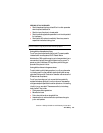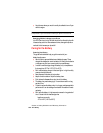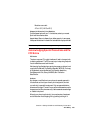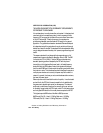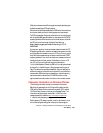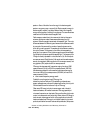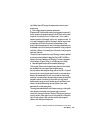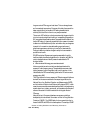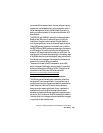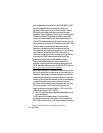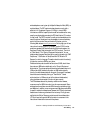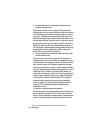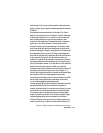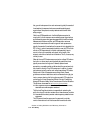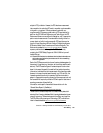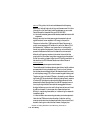
Section 4: Safety Guidelines and Warranty Information
4A: Safety 109
recommends different exposure levels in the lower and upper frequency
ranges and for localized exposure from certain products such as hand-
held wireless telephones. Currently, the World Health Organization is
working to provide a framework for international harmonization of RF
safety standards.
The NCRP, IEEE, and ICNIRP all have identified a whole-body Specific
Absorption Rate (SAR) value of 4 watts per kilogram (4 W/kg) as a
threshold level of exposure at which harmful biological effects may
occur. Exposure guidelines in terms of field strength, power density and
localized SAR were then derived from this threshold value. In addition,
the NCRP, IEEE, and ICNIRP guidelines vary depending on the frequency
of the RF exposure. This is due to the finding that whole-body human
absorption of RF energy varies with the frequency of the RF signal. The
most restrictive limits on whole-body exposure are in the frequency range
of 30-300 MHz where the human body absorbs RF energy most efficiently.
For products that only expose part of the body, such as wireless phones,
exposure limits in terms of SAR only are specified.
The exposure limits used by the FCC are expressed in terms of SAR,
electric and magnetic field strength, and power density for transmitters
operating at frequencies from 300 kHz to 100 GHz. The specific values
can be found in two FCC bulletins, OET Bulletins 56 and 65:
http://www.fcc.gov/oet/info/documents/bulletins/#56;
http://www.fcc.gov/oet/info/documents/bulletins/#65
6. Why has the FCC adopted guidelines for RF exposure?
The FCC authorizes and licenses products, transmitters, and facilities
that generate RF and microwave radiation. It has jurisdiction over all
transmitting services in the U.S. except those specifically operated by the
Federal Government. While the FCC does not have the expertise to
determine radiation exposure guidelines on its own, it does have the
expertise and authority to recognize and adopt technically sound
standards promulgated by other expert agencies and organizations, and
has done so. (Our joint efforts with the FDA in developing this website is
illustrative of the kind of inter-agency efforts and consultation we engage
in regarding this health and safety issue.)



